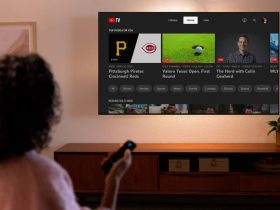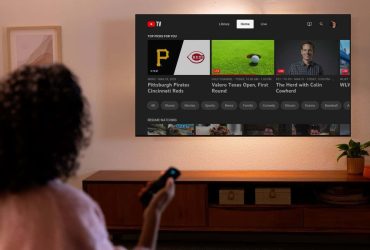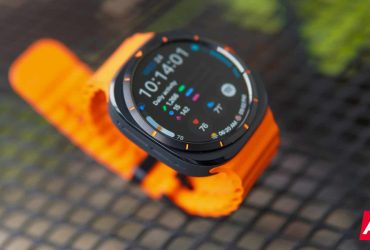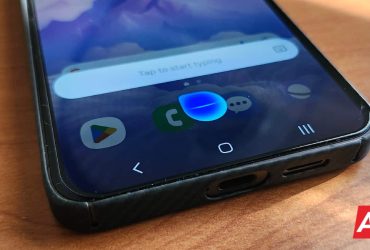Phone Comparisons: Google Pixel 9 Vs OnePlus 12 Specs
Contents
This time around, we’ll be comparing Google’s vanilla Pixel 9 handset and OnePlus’ flagship offering for last year. In other words, this will be a Google Pixel 9 vs OnePlus 12 specs comparison. These two smartphones do not have all that much in common. In fact, they’re quite different, which should make for a rather interesting comparison. The OnePlus 12 is still the more expensive phone, though.
As per usual, we will first list the specs of both smartphones and will then proceed to compare them across a number of other categories. We’ll be comparing their designs, displays, performance, battery life, cameras, and audio output. These two phones not only look completely different, but they have considerably different internals as well. Let’s see how they compare.
![]()
Google Pixel 9

OnePlus 12
| Google Pixel 9 | OnePlus 12 | |
|---|---|---|
| Dimensions | 152.8 x 72 x 8.5 mm | 164.3 x 75.8 x 9.2 mm |
| Weight | 198 grams | 220 grams |
| Display | 6.3-inch OLED | 6.82-inch LTPO AMOLED |
| Refresh rate | 120Hz | 1-120Hz (adaptive) |
| Resolution | 2424 x 1080 | 3168 x 1440 |
| Chipset | Google Tensor G4 | Qualcomm Snapdragon 8 Gen 3 |
| RAM | 12GB (LPDDR5X) | 12GB/16GB (LPDDR5X) |
| Storage | 128GB/256GB (UFS 3.1) | 256GB/512GB/1TB (UFS 4.0) |
| Main camera | 50MP (f/1.7 aperture, 1/1.31-inch sensor size, 1.2um pixel size, dual pixel PDAF, OIS) | 50MP (f/1.6 aperture, 1/1.43-inch sensor size, 1.12um pixel size, multi-directional PDAF, OIS) |
| Ultra-wide camera | 48MP (f/1.7 aperture, 1/2.55-inch sensor size, 123-degree FoV, dual pixel PDAF) | 48MP (f/2.2 aperture, 1/2.0-inch sensor size, 114-degree FoV, 0.8um pixel size, PDAF) |
| Telephoto camera | N/A | N/A |
| Periscope telephoto camera | N/A | 64MP (f/2.6 aperture, 1/2.0-inch sensor size, 0.7um pixel size, PDAF, OIS, 3x optical zoom) |
| Selfie camera | 10.5MP (f/2.2 aperture, 1/3.1-inch sensor size, 1.22um pixel size) | 32MP (f/2.4 aperture, 1/2.74-inch sensor size, 0.8um pixel size) |
| Battery size | 4,700mAh | 5,400mAh |
| Charging | 27W wired, 15W wireless (with Pixel Stand), 12W wireless (Qi), reverse wireless (charger not included) | 100W wired (80W in the US), 50W wireless, 10W reverse wireless (charger availability is market dependent) |
| Colors | Obsidian, Porcelain, Wintergreen, Peony | Flowy Emerald, Silky Black, Silver (Glacial White) |
Google Pixel 9 vs OnePlus 12: Design
Both of these phones are made out of aluminum and glass. That’s basically where their similarities end, though. The Google Pixel 9 has a flat display with a centered display camera hole up top. The OnePlus 12 includes a curved display with a centered display camera hole up top. That camera hole is smaller than the one on the Pixel 9, though. The bezels are very thin on both smartphones, and uniform too. They’re a bit thinner on the OnePlus 12, if you’re wondering.
Both smartphones have their physical buttons on the right-hand side. The positioning is different, however. The Pixel 9’s power/lock key sits above the volume up and down buttons. It’s the other way around on the OnePlus 12. Also, the OnePlus 12 has an alert slider on the left side and an IR blaster up top. The Google Pixel 9 includes a flat frame all around, which is not the case with the OnePlus 12. Its front and back sides curve into a thin side frame, which is not exactly flat.
If we flip the two phones around, you’ll see considerably different camera islands. The Pixel 9 includes a horizontal camera bar, which is placed up top. It is pill-shaped and contains three cameras on the inside. The OnePlus 12, on the other hand, has a circular camera island with three cameras on the inside. That camera setup sits in the top-left corner. The Pixel 9’s backplate is completely flat, while the OnePlus 12’s does curve towards the edges.
The OnePlus 12 does have a considerably larger display, thus the phone is taller and wider. It is also thicker and 22 grams heavier as well. Both phones are water and dust-resistant. The Pixel 9 offers an IP68 certification, while the OnePlus 12 is IP65 certified.
Google Pixel 9 vs OnePlus 12: Display
The Google Pixel 9 has a 6.3-inch OLED display with a resolution of 2424 x 1080. That display is flat, and it supports HDR10+ content. It has a 120Hz refresh rate, and its peak brightness is 2,700 nits. The screen-to-body ratio is at around 86%, while the display aspect ratio is 20:9. The Gorilla Glass Victus 2 protects this panel, and it comes from Corning, of course.

The OnePlus 12, on the other hand, has a 6.82-inch LTPO AMOLED display. That panel is curved, and it offers a resolution of 3168 x 1440. It can project up to 1 billion colors, and it supports Dolby Vision and HDR10+ content. It has an adaptive refresh rate (1-120Hz), and high-frequency PWM dimming (2,160Hz) too. The peak brightness of this display is 4,500 nits, in theory. The screen-to-body ratio is at around 90%, while the panel is protected by the Gorilla Glass Victus 2.
Both of these displays are actually really good. Both of them are vivid, have great viewing angles, and are more than sharp enough. One is flat while the other is curved, though, so keep that in mind. The OnePlus 12 does get a bit brighter, but not as much as their peak brightness numbers would suggest. You’ll never be able to get that high. The OnePlus 12’s panel does have the advantage of offering high-frequency PWM dimming, though.
Google Pixel 9 vs OnePlus 12: Performance
The Google Tensor G4 processor, a 4nm chip, fuels the Pixel 9. That is Google’s latest processor, and it’s paired with 12GB of LPDDR5X RAM. Google is also using UFS 3.1 flash storage inside of this phone. The OnePlus 12 is fueled by the Snapdragon 8 Gen 3 processor, a 4nm chip. That processor is backed by up to 24GB of LPDDR5X RAM (China, up to 16GB globally), and OnePlus opted for UFS 4.0 flash storage. Neither phone supports storage expansion.
Both of these smartphones offer great day-to-day performance. They’re very snappy regardless of what you’re doing, and that goes for opening apps, jumping between them, multimedia consumption, and basically everything else you can think of. The Snapdragon 8 Gen 3 is still technically a more powerful chip, but they both do a fantastic job of keeping the devices smooth at all times.
There is a difference on the gaming side of things, though. The OnePlus 12 is the better choice for gaming, not only because of its chip, but because of faster storage, better cooling, and gaming features that come pre-installed. If you’re playing low-end and/or mid-range games, it doesn’t really matter, but high-end titles will run better on the OnePlus 12.
Google Pixel 9 vs OnePlus 12: Battery
The Google Pixel 9 includes a 4,700mAh battery, while the OnePlus 12 comes with a 5,400mAh unit. Both of those battery capacities are good enough for the size of these two phones. In fact, in the case of the OnePlus 12, it’s actually a great size. You’ll be glad to know that both of these phones deliver in the battery life department. The Google Pixel 9 is a major improvement compared to the Pixel 8. Samsung’s new modem is the main reason for that.
Yes, the OnePlus 12 offers better battery life. That phone is a true battery demon. The Pixel 9 is not that far behind, though, which is great for a compact smartphone, that’s for sure. Both of these smartphones can serve basically every user, even power users, actually. We’ve been able to get truly high screen-on times with both, even though the OnePlus 12 is clearly notably better. It’s still a great phone to get, despite the fact that the OnePlus 13 has been out for quite some time.
The Google Pixel 9 supports 27W wired, 15W wireless (Pixel Stand), 12W wireless (Qi), and 5W reverse wireless charging. The OnePlus 12, on the other hand, supports 100W wired (80W in the US), 50W wireless, and 10W reverse wireless charging. The Pixel 9 does not come with a charger in the retail box, while when it comes to the OnePlus 12, it all depends. It depends on where you buy the phone, basically.
Google Pixel 9 vs OnePlus 12: Cameras
The Pixel 9 comes with two cameras on the back, while the OnePlus 12 has three of them. A 50-megapixel main camera (1/1.31-inch sensor size) is backed by a 48-megapixel ultrawide snapper (1/2.55-inch sensor size, 123-degree FoV) on the Google Pixel 9. The phone does not include a telephoto or a periscope telephoto camera.

The OnePlus 12, on the other hand, comes with a 50-megapixel main camera (1/1.43-inch sensor size), a 48-megapixel ultrawide snapper (1/2.0-inch sensor size, 114-degree FoV), and a 64-megapixel periscope telephoto camera (1/2.0-inch sensor size, 3x optical zoom). Having that periscope telephoto camera is an instant advantage for the OnePlus 13. The phone also has a notably larger sensor on its ultrawide camera.
The main camera is a toss-up, in terms of performance. It all depends on the scene. Both of them do a great job in that regard. The Pixel 9 is more contrasty, while the OnePlus 12 is closer to real life, and we really prefer the colors it offers. Both ultrawide cameras are really good, and quite frankly, it also depends on what you’re shooting and under which conditions. The OnePlus 12 wins the zoom shots with ease, all types, basically. Both phones do a good job in low light, especially with their main cameras.
Audio
Both of these phones include stereo speakers. The ones on the Google Pixel 9 Pro are a bit louder in comparison. The difference is not that big, however, and both sets are loud enough. The sound quality is also good on both sides.
There is no audio jack on either of these two smartphones. You can use their Type-C ports for wired connections, though. For wireless connectivity, the Pixel 9 supports Bluetooth 5.3, while the OnePlus 12 offers Bluetooth 5.4 support.
What’s your reaction?
Love0
Sad0
Happy0
Sleepy0
Angry0
Dead0
Wink0









Leave a Reply
View Comments